The post 7 Tips For Travel In Southeast Asia appeared first on The Expeditioner Travel Site.
]]>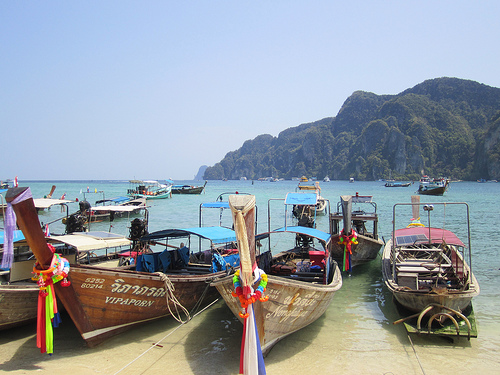
Southeast Asia is probably the best place in the world for your first extended backpacking trip. The food is delicious, the locals friendly, the beaches extraordinary, the accommodations well-established and the sites varied and unforgettable. You’re likely to return home with plenty of fond memories and incredible photos of Southeast Asia. If you’re considering setting off for Thailand, Malaysia, Laos, Cambodia, Vietnam, or any other country in the region, keep these tips in mind.
1) Stay Longer in Fewer Places
One of the biggest mistakes I saw was travelers rushing through an itinerary with too many places in too little time. No matter how long your trip is, it’s advantageous to go fewer places, while spending more time in each place. I would also encourage you to take more time than you think you need or want. Chances are you’ll wish you had more time.
On my recent trip to Southeast Asia, I saw one young backpacker who had begun to resent the region. He had been pushing too quickly to “see” whatever it was that he thought he had to see, ran into some unexpected difficulties and got extremely frustrated. Take it more slowly and you’ll have a better trip.
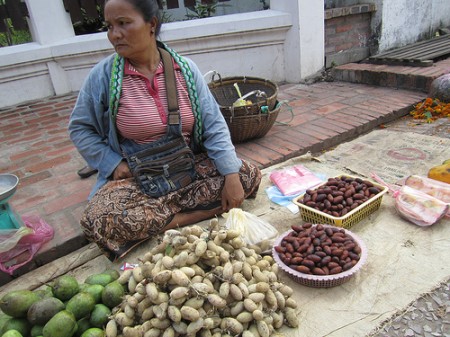 2) Don’t Plan Too Much
2) Don’t Plan Too Much
Leave room for spontaneity. That’s part of what makes traveling fun. You might want to plan a basic outline of the major places you want to visit. But give yourself plenty of time to absorb the atmosphere of the cities and villages and leave time in case you meet people and decide to do an impulsive side trip.
There’s no need to make reservations anywhere in Southeast Asia. You can just show up and shop around for your accommodation. I traveled for three months and never made one. I had a roof (and an inexpensive one I’ll add) over my head each night.
3) Travel With a Different Guidebook
Everybody has a Lonely Planet guidebook. Don’t buy one. Get a Rough Guide, Moon or Footprint. Lonely Planet channels everyone into the same guesthouses and hostels and that drives prices up. Plus, these guesthouses fill up more quickly. A good tactic is to check out a few guesthouses located around the ones listed in your guidebook. They are usually of the same standard and sometimes cheaper. I also always look at more than one place . Bargain friendly, and take the one that suits you best.
I generally choose my guidebook by the one that has been updated most recently. And remember, if at times of weakness, you are missing your LP, chances are the backpacker on the bus in the seat next to you has one.
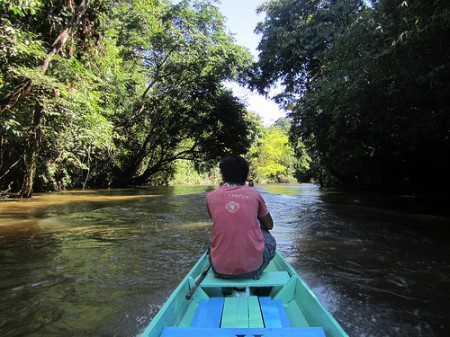 4) Avoid Multi-Day Packages and Backpacker-Only Buses
4) Avoid Multi-Day Packages and Backpacker-Only Buses
These are designed to make traveling easier. Organizers facilitate border crossings, transportation connections, accommodation and sometimes visas. In my opinion, this takes the fun and challenge out of independent travel. Figuring out transportation logistics is half the battle of traveling. Our detailed guidebooks make it easy enough, anyway. The multi-day packages also keep backpackers together and discourage interaction locals.
Another reason to avoid these packages, as well as international buses and VIP buses, is that you become an easier target for scams. In general Thais are pretty honest people, except when it comes to the individuals running the foreigner-only long distance buses from Khaosan Road to the rest of Thailand. I’ve heard some nasty stories of long delays, stranded travelers and multiple accounts of theft. Best to keep to the normal buses that leave from the bus stations.
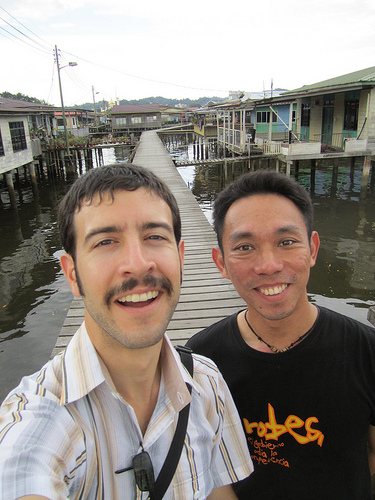 5) Travel With a friend; Travel Alone
5) Travel With a friend; Travel Alone
If you are traveling alone, great, you will meet plenty of people, both local and fellow travelers. If you are traveling with a friend, you will get lots of quality time with that person. Try to structure time away from your travel companion for a couple of reasons.
First, it will give you the independence to experience traveling on your own: meeting new people, making your own mistakes and choosing your own adventures. Secondly, it will improve and strengthen your relationship with your friend/partner when you return to each other. I used this scenario during two different trips with a good friend and it worked well. I also noticed that I have different and richer travel experiences when I’m alone.
6) Pack Light
This is one of my universal travel truth tips. It is always a good idea to pack as light as possible. Remember, you’re carrying everything on your back. Carrying less will obviously be lighter and increase your mobility, but it will also make getting in and out of transport, and to and from your accommodation easier. There’s really no need to take more than three or four changes of clothes.
If you’ll be working from the road or are a serious photographer, you might have a decent amount of equipment (extra lenses, external storage devices and laptops). But, most of us can just hit the road with a medium-sized backpack and small personal bag for valuables. I generally put nothing of value in my backpack. Although crime and theft in Southeast Asia is very unusual, I still want peace of mind when I throw my bag under or on top of the bus. And if your backpack is small enough, you may be able to carry it on with you, including during your flight, which could also save you money.
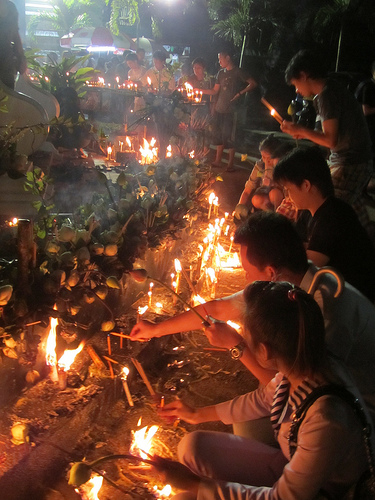 7) Avoid Burnout
7) Avoid Burnout
If you’re going to be traveling for more than two months, you’re going to need to recharge your batteries. Everybody does this in his or her own way. It could be alone with a book, a film, spending a day inside a nicer hotel room, eating comfort food, playing football — whatever.
Know yourself and know what you need to get a fresh perspective of where you are and what you’re doing. I’ve seen travelers get really frustrated and begin to develop animosity towards the country that they’re in at the time.
Author Paul Theroux, in his latest book, suggests bringing reading material unrelated to the country in which you’re traveling. At the end of a culturally intense day in Cambodia, you probably don’t want to wind down by reading a book that takes place in Southeast Asia. Rather, take one that will provide some relief through means of escape.
[All images via the author]

About the Author
 Stephen Bugno has been traveling the world for more than a decade as both a volunteer and a wanderer, and is the editor and publisher of the online travel magazine GoMadNomad.com and his personal site BohemainTraveler.com. You can follow Stephen via twitter at @bohemiantrav or on Facebook.
Stephen Bugno has been traveling the world for more than a decade as both a volunteer and a wanderer, and is the editor and publisher of the online travel magazine GoMadNomad.com and his personal site BohemainTraveler.com. You can follow Stephen via twitter at @bohemiantrav or on Facebook.
The post 7 Tips For Travel In Southeast Asia appeared first on The Expeditioner Travel Site.
]]>The post What’s Up With Tubing And Vang Vieng, Laos? appeared first on The Expeditioner Travel Site.
]]>
I’ve never been to Laos, but it seems like everyone who has inevitably spends some portion of their trip tubing in Van Vieng, a town in Vientiane Province that has begun to take on the dreaded moniker: “Backpacker Ghetto.” And when I hear this I ask why they ended up going. Was floating down a river while getting intoxicated and watching episodes of Family Guy in bars along the way some sort of ancient tradition by the Lao people?
Of course not. It seems the simple answer is that everyone else does it. My guess is that some enterprising bar owner in this once sleepy town (better known a few decades ago as home to an American military landing strip) decided to start peddle tubing from his riverside bar to attract new backpackers who’d started to include Laos in their travels. One of these backpackers probably ended up being a Lonely Planet guidebook writer, the town got picked up in the next edition, and the next was history.
But as was pointed out by the NZ Herald, “Saying you’re going tubing in Vang Vieng is like claiming that you’re going walking when you’re really about to head off on a pub crawl.” It seems that in the midst of village-hopping and temple gazing, there is a very real need for backpackers to unwind a bit in a more “traditional” manner while traveling in Laos. This has its consequences too. Anecdotal stories from travelers have revealed tales of gashed heads, broken limbs, and as the above story points out, even drownings.
So it begs the question: How does a town become a “backpacker ghetto?” Why do certain countries/islands suddenly become requisite places to visit on the backpacker trail? Why does tubing with a beer in my hand in Southeast Asia sound much better than sitting here in rainy New York, despite the very real danger of physical harm?
This and other questions answered in future posts. Or feel free to leave your own ideas below.
[Tubing in Vang Vieng by TommyTastic/Flickr]
The post What’s Up With Tubing And Vang Vieng, Laos? appeared first on The Expeditioner Travel Site.
]]>The post An Unforgettable Tour Through Southeast Asia [Photo Essay] appeared first on The Expeditioner Travel Site.
]]>From the 1000-year-old temples, to the food, to the other backpackers one encounters on such a trek, what follows, I hope, is a gentle kick-in-the-behind motivation for those thinking of traveling there.
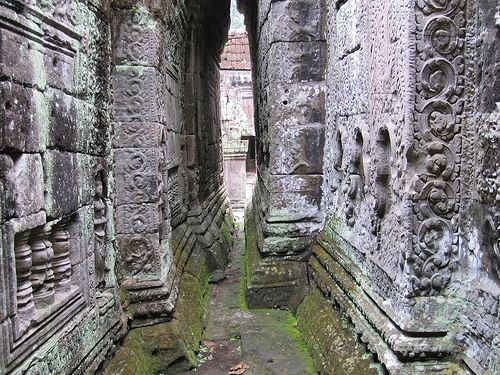
The walls at Preah Khan, probably the most famous temple in Angkor, Cambodia.
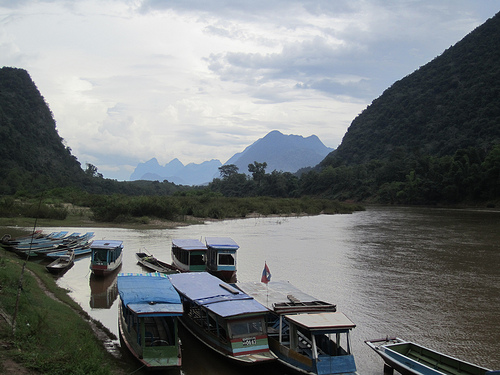
Looking downstream in Muang Ngoi, a Lao town along the Nam Ou River.
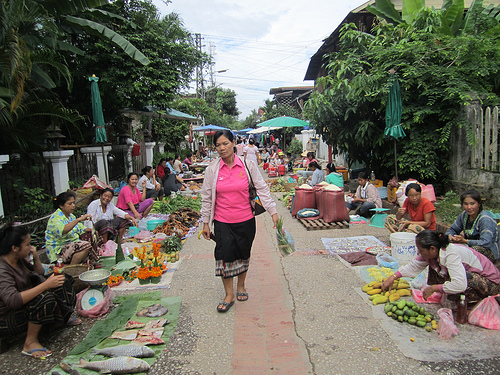
An early-morning stroll in Luang Prabang’s morning market, north central Laos.

Dinner during a two-day trek to an Akha hill tribes village near Phongsali, the northernmost province in Laos.
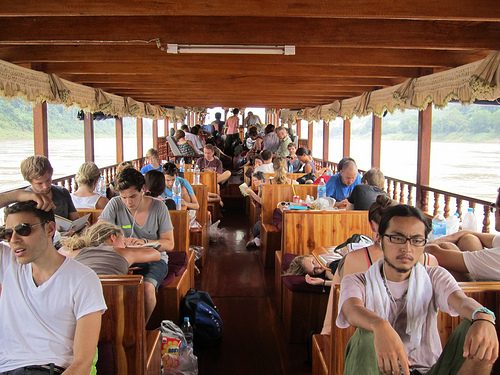
Taking the slow boat ride down the Mekong River in Laos from Houayxai to Pakbeng.
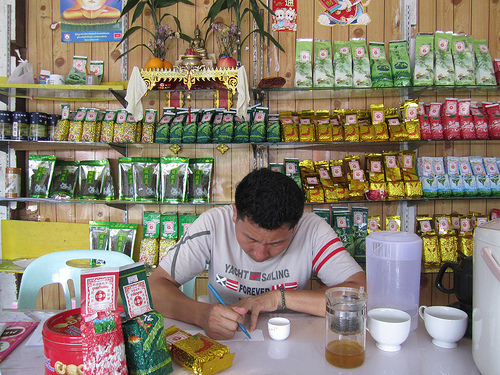
This tea salesman, in the Chinese village in northern Thailand called Mae Salong. is writing out the brewing instructions I asked for.
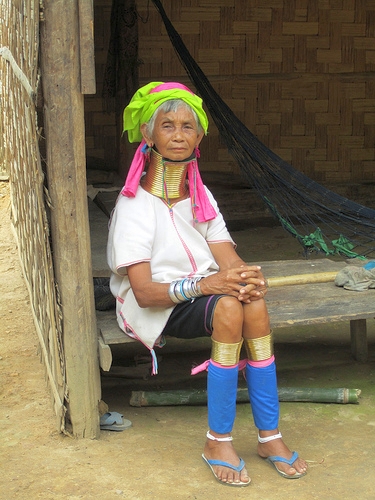
An older woman from Mae Hong Son, in northern Thailand near the border of Burma.
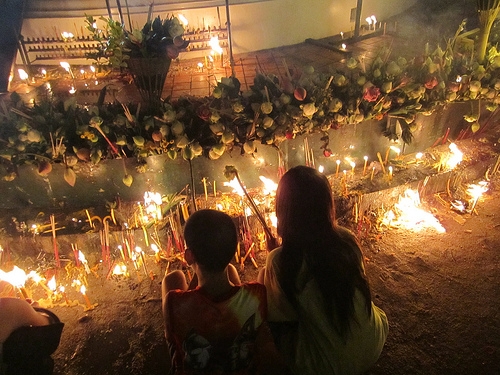
Visakha Bucha Day in Chiang Mai. The holiday celebrates the birth, enlightenment and entry into nirvana of the Buddha.
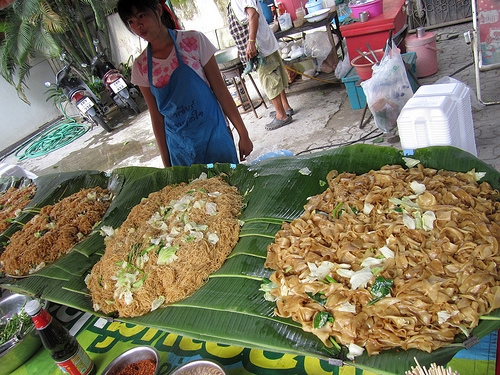
A vendor prepares for the crowds at the night market in Chiang Mai.
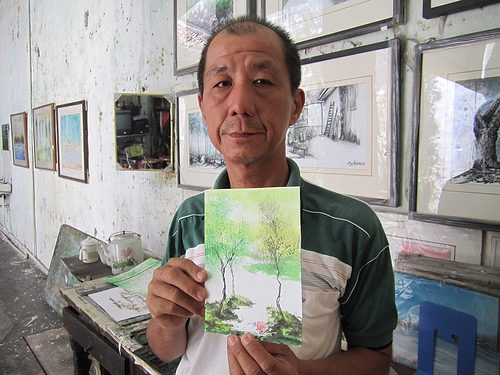
Stanley Ho, my favorite artist in Melaka. He’s holding the painting I bought from him. Visit Stanley at 46 Jalan Tun Tan Cheng Lock in the old part of town. He loves to chat.
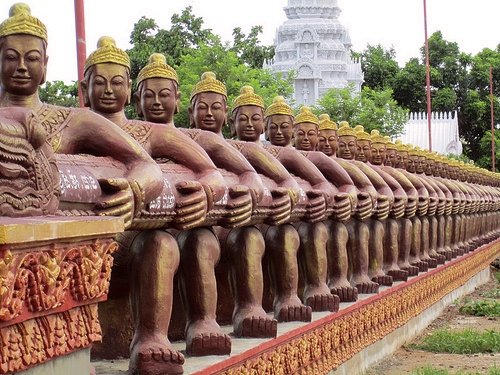
Near Kampong Cham in central Cambodia is the 11th-century religious compound, Wat Nokor.

Sunset in Kota Kinabalu, Sabah, Malaysia.

About the Author
 Stephen Bugno has been traveling the world for more than a decade as both a volunteer and a wanderer, and is the editor and publisher of the online travel magazine GoMadNomad.com and his personal site BohemainTraveler.com. You can follow Stephen via twitter at @bohemiantrav or on Facebook.
Stephen Bugno has been traveling the world for more than a decade as both a volunteer and a wanderer, and is the editor and publisher of the online travel magazine GoMadNomad.com and his personal site BohemainTraveler.com. You can follow Stephen via twitter at @bohemiantrav or on Facebook.
The post An Unforgettable Tour Through Southeast Asia [Photo Essay] appeared first on The Expeditioner Travel Site.
]]>The post What It’s Like To Get Breakfast In Luang Prabang, Laos appeared first on The Expeditioner Travel Site.
]]>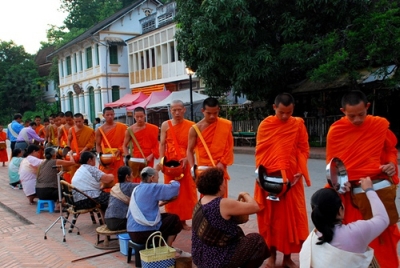
For travelers who’ve been to Southeast Asia, they know that Laos itself is no longer the hidden gem of the region it once was, with more and more travelers having been turned on to the slow rhythms and friendly people that populate this small, landlocked country. Many backpackers end up in the city of Luang Prabang, in north-central Laos, a former royal capital and the recipient of a UNESCO World Heritage Site recognition in 1995. Here, they find Buddhist temples sitting next to French colonial era houses sitting next to plain structures housing the 100,000 or so residents that make up the city.
But how is Luang Prabang’s new popularity affecting the city? As a recent Sydney Morning Herald story reports, it’s a little unnerving to see the clash between local customs and those observing from afar. Take the case of the tradition of giving alms to local monks.
Entire households wake early, drape white scarves across their shoulders and gather on street corners with cane baskets filled with little banana-leaf parcels of sticky rice prepared this morning. The monks stop to chant at intervals, then walk on, silently and slowly, as their bowls are filled by the faithful, for whom this is a gesture to accrue heavenly merit and an act of practical compassion, for this is the young men’s main source of food.
Some people complain that the alms-giving has turned into a spectacle for tourists and, certainly, it’s appalling to see noisy busloads pull up on Sakkarine Road, jump in front of the priestly procession for hasty digital snaps, then roar off. But I see plenty of considerate, observant travellers. And on the backstreets, in the warm morning rain, I’m the only visitor among residents gathered, kneeling, with their alms, as they do every day.
Okay, if you’re going to take in this tradition, please do not do so by pulling up in a noisy bus. I know there’s air conditioning and maybe even some fun Vietnamese soap operas playing inside, but at least try to be as discreet as possible, maybe even walking there, and keeping your distance. These are monks, getting breakfast. I can only imagine what it’d be like if an Australian couple snapped pictures of me as I munched on my morning bowl of generic frosted shredded wheat while I watched the Today Show (and, yes, that is my typical morning routine). Show some respect, and at least wait until I’ve had my first cup of coffee for the day.
[Morning Alms by Kwong Hong Leong/Flickr]
The post What It’s Like To Get Breakfast In Luang Prabang, Laos appeared first on The Expeditioner Travel Site.
]]>The post The People You See When You Drive appeared first on The Expeditioner Travel Site.
]]>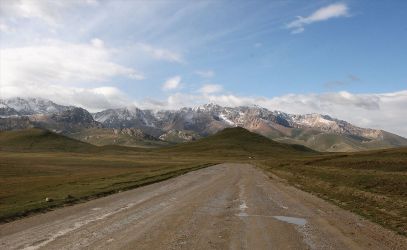
The only problem with mass public transit is the immediacy of arrival. Although I find trains romantic, planes quick and comfortable, buses affordable, you do see a lot more when you travel by car.
Such was Jon Faine’s experience on his road trip. He and his son, Jack, made a six-month-long journey from Melbourne to London, allowing them to encounter unique experiences on the roads less traveled. In an edited excerpt from his upcoming book in the The Sydney Morning Herald, he explains an up-close look at the difficulties in China. One of them was just getting in:
I tell Jack to sit up in his seat, to turn off the music, to take his feet off the dashboard and put his shoes on. I am nervous and half expecting to be told to go away. Several travellers have warned us about Chinese border checks, seizure of guidebooks and laptops, satellite phones being confiscated and eternal searches for contraband or politically sensitive materials. I am prepared for an argument, determined not to lose any of our gear.
A foreigner driving through Chinese borders is not common practice and usually discouraged by most travel guides. Still, Faine found a way in via a tip by a local guide: China caters to groups from Europe traveling east to west. Faine threw them for a loophole: “I cheekily suggested that we could be a group if that was required – a group of one. The reply came through that my joke satisfied the bureaucrats.”
If he did not do that, he and his son would not have had the experience of driving through jungle brush, twisting through traffic blockades, and feasting like kings in the land of emperors. They would not have met a little girl, eyes wide and blind. The mother said that she adopted the little girl because she had been abandoned. The mother began to cry and explain that the girl was losing her sight and will permanently lose it because they cannot afford to fix it.
After doing what they could, Jon and Jack guiltily drove away, tears streaming. They were “the luckiest of the luckiest” but that didn’t help her.
I don’t think they should feel guilty. I feel lucky to heave read this and know that people’s hearts are still affected. Perhaps he would not have been so affected if he took the plane.
By Brit Weaver

About the Author

Toronto born and based, Brit is an avid leisure cyclist, coffee drinker and under-a-tree park-ist. She often finds herself meandering foreign cities looking for street eats to nibble, trees to climb, a patch of grass to sit on, or a small bookstore to sift through. You can find her musing life on her personal blog, TheBubblesAreDead.wordpress.com.
The post The People You See When You Drive appeared first on The Expeditioner Travel Site.
]]>The post Video: Laos By Boat appeared first on The Expeditioner Travel Site.
]]>Yves Schiepek took a pretty epic trip throughout Southeast Asia, including stops in Vietnam, Laos, Singapore and Malaysia, documenting most of the trip here on his Vimeo page.
The above video is taken from the Laos portion of his trip where, it appears, he spent much of the time tooling around on a speedboat checking out the scenery — an altogether not bad way to get acquainted with the country. Things really get going at 1:35; it’ll make you want to ditch your lame car.
The post Video: Laos By Boat appeared first on The Expeditioner Travel Site.
]]>The post Asia On Two Wheels appeared first on The Expeditioner Travel Site.
]]>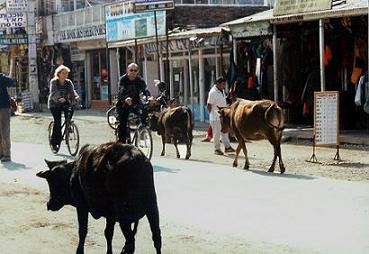
Places like Taiwan, China, Laos, and Japan maybe more known for their motor bikes, or their overly utilitarian use of bicycles. This WSJ article, explores a less popular way to get moving through, and in touch with, the cultures of these these countries.
The article states, “Sometimes the truest way to experience a place is on the back of a bike.” No argument from me. Well, until the saddle sores set in. The human powered nature of the transport just seems to more easily immerse you in the local cultures you peddle through.
Afternoon rides to a multiday trek through Laos, you can discover temples rarely seen by foreign eyes, refuel at roadside fresh fruit stands on the Chinese island of Hainan, or refill your water bottles at a fresh spring near Kyoto, Japan.
Although outside of Asia, also described was a trip through the vineyards southeast of Melbourne, Australia. That’s most likely where you’ll find me. Although, who knows how many more miles I’d put after a few drinks. I can hear myself now, “you guys go on without me. I’ll catch up (snicker, snicker).”
By Jon Wick

About the Author
 Jon lives in Butte, Montana, spending most of his time on skis or bikes; sometimes both. He began travel writing while teaching in Korea and is currently pursuing his Master’s Degree in Technical Communication at Montana Tech. Jon has begun writing his first book, The Story of Will, whose movie rights are still (very) available. Catch more of Jon at TheJonWickproject.wordpress.com. (@ExpedJon)
Jon lives in Butte, Montana, spending most of his time on skis or bikes; sometimes both. He began travel writing while teaching in Korea and is currently pursuing his Master’s Degree in Technical Communication at Montana Tech. Jon has begun writing his first book, The Story of Will, whose movie rights are still (very) available. Catch more of Jon at TheJonWickproject.wordpress.com. (@ExpedJon)
The post Asia On Two Wheels appeared first on The Expeditioner Travel Site.
]]>The post Slowing Down In Savannakhet appeared first on The Expeditioner Travel Site.
]]>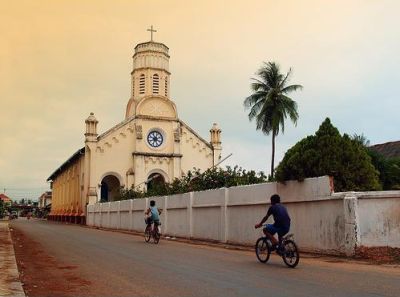
With its massive stupas, vast eco-reserves and relaxed vibe, Savannakhet is a must-see in southern Laos, but to really understand the region be prepared to slow down and take it all in, one laid-back day at a time.
By Hal Amen
Savannakhet was quiet. Shockingly quiet.
Coming to it as I did, direct from the shrill buzz and agitation of Vietnam, I was taken aback by the palpable tranquility that surrounded my little guesthouse, the one with the spacious second-story patio looking out over the Mekong River and Thailand beyond. I sat there in the darkness of Laos that first night, gazing at the bluish glow of lights on the opposite bank, imagining where I’d rather be.
Before a day had passed, my restless traveler’s eyes had already tired of spiky-roofed wats (temples found all over Southeast Asia) and the muted pastels of crumbling colonial architecture. A lazy lunch spilled into an aimless walk through the deserted town center and a half-hearted search for the bus station. Maybe I could book a seat south, I thought to myself as I wandered, on to the city of Pakse and then further down to the acclaimed 4,000 islands region, where the Mekong opens up just above of the Cambodian border. Or perhaps I’d simply jaunt over the bridge to Thailand — backpacker’s paradise.
Instead, I stumbled upon the Savannakhet tourism office. Its excursions required little marketing, and I quickly signed up for a day hike through the nearby Dong Natad Protected Area, the region’s prime destination for eco-tourists.
***
The next morning, against a backdrop of perpetually gray drizzle, a tuk-tuk arrived at my guesthouse, ready to transport me into the jungle. Aboard the motorized version of the traditional rickshaw was my young guide, Soumphone, probably younger than me, wearing a camouflage jacket and a smile. Eager to show off his command of the English language, Soumpohne made sure not an instant of silence transpired as we motored through the city on our tuk-tuk.
Our first stop was Talat Savan Xai, the marketplace north of town that overflows with all the activity central Savannakhet lacks. There, we threaded our way through a maze of food vendors hawking cuisine both familiar and eye-popping, including everything from heaping bags of pellet-shaped short-grain rice to pickled tea eggs and grilled lizard kebabs. Soumphone deftly selected a mix of items from the confusion, stowing them in his fraying olive-green backpack for our lunch later that day.
Supplies procured, we tuk-tuked east a few kilometers and came to a halt next to a man who was evidently waiting for us along the side of the road. Boodna, a stout man belonging to one of the communities that still inhabit Dong Natad, shot us a quick grin and with a shake of his machete motioned for us to follow as he made his way to an unmarked, overgrown trailhead and through a wall of vegetation marking the edge of the reserve.
As we entered, leafy vines immediately converged from all sides, slapping our arms and faces with the wetness of trickled-down rain. Massive, serpentine dipterocarp trees that curved gracefully towards the sky stood along the trail like massive pillars supporting an overhead canopy. Through gestures and some translation from Soumphone, Boodna showed me how the oil from the trees is used to make torches and demonstrated the technique for scaling their thick trunks to reach the honey from the beehives perched high above.
A few kilometers in, the vegetation subsided to reveal myth-enshrouded Nong Lom Lake. We sat together — the three of us — cross-legged by the water, resting on improvised mats of broad, thick leaves and feasting on the market takeaway: slices of grilled pork, fresh green veggies and balls of sticky rice dipped in chili sauce, all eaten with our hands. As we ate, the sky began to clear, allowing me my first glimpse of the Laotian sun. Its warmth was refreshing after the clinging dampness of the jungle, and it caused dozens of colorful butterflies to emerge from their hiding and take flight into the air around us.
After the meal, Boodna dashed off into the woods, returning a few minutes later with his pants wet and rolled up to his knees. As he slowly smoothed them back down, dozens of tiny fish fell out and flopped around in the dirt. He laughed loudly over his catch, and Soumphone explained this would go towards his family’s dinner that night.
Another hour’s walk brought us to the other side of the forest; Boodna nodded a farewell, quietly turning to retrace his steps into the leafy wilderness. Soumphone and I continued along the road to Ban That — literally “stupa village” — a reference to the adjacent That Ing Hang Stupa that commemorates a stop the Buddha is said to have made during his wanderings some 2,500 years ago.
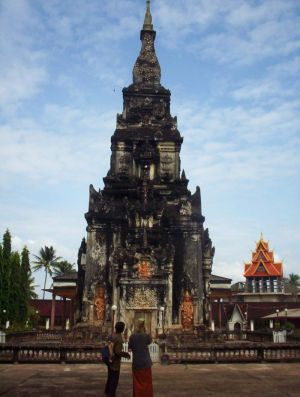 Stupas (massive Buddhist monuments built to commemorate sacred events or locations) are always impressive sights to see in person and Ing Hang is no exception. Stand back and you absorb the grandeur of its height, while up close you admire the details of its ornamentation. Once a year, the towering obelisk marks the nexus of a rollicking full-moon festival, one of the biggest in southern Laos.
Stupas (massive Buddhist monuments built to commemorate sacred events or locations) are always impressive sights to see in person and Ing Hang is no exception. Stand back and you absorb the grandeur of its height, while up close you admire the details of its ornamentation. Once a year, the towering obelisk marks the nexus of a rollicking full-moon festival, one of the biggest in southern Laos.
As daylight waned, we strolled through Ban That, its traditional houses set high on stilts to keep wild animals and floodwaters out. Groups of women sat in the shade beneath them; one pair invited us over for a chilled cup of water. The cement foundation of the home was littered with large, brittle husks, the result of a day’s work on the hand-powered rice thresher resting in the corner. I’d never seen rice in its pre-processed form; before the chaff is removed, the individual grains are surprisingly large.
Smiles, waves and laughter were heaped on us as we departed and made our way to the idling tuk-tuk.
***
That evening, sipping a cool Beer Lao on the guesthouse patio, I felt a fresh appreciation for the languid lull of Savannakhet. From an alley somewhere nearby, the echoes of playing children ricocheted off pockmarked stone walls. The smell of sweet egg cakes, hot off the griddle, wafted up from a pushcart just down the road. Out of some corner of darkness, a hollow voice shouted in its incomprehensible but somehow musical language. A dog barked.
As the Mekong rushed along below me, unchecked in its travels to distant and disparate locales, I realized maybe I wasn’t in such a hurry to leave.

Freelance writer Hal Amen has been an avid traveler for as long as he can remember, and he wouldn’t have it any other way. 2009 is his volunteer year in South America. Follow along at Matador Travel, where he is a frequent contributor, and on his personal travel blog, WayWorded.
The post Slowing Down In Savannakhet appeared first on The Expeditioner Travel Site.
]]>